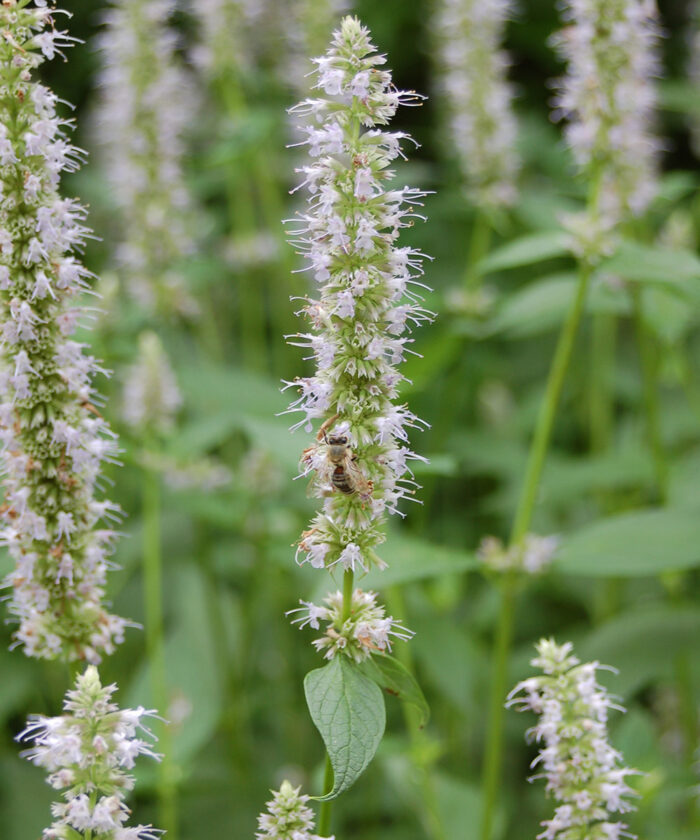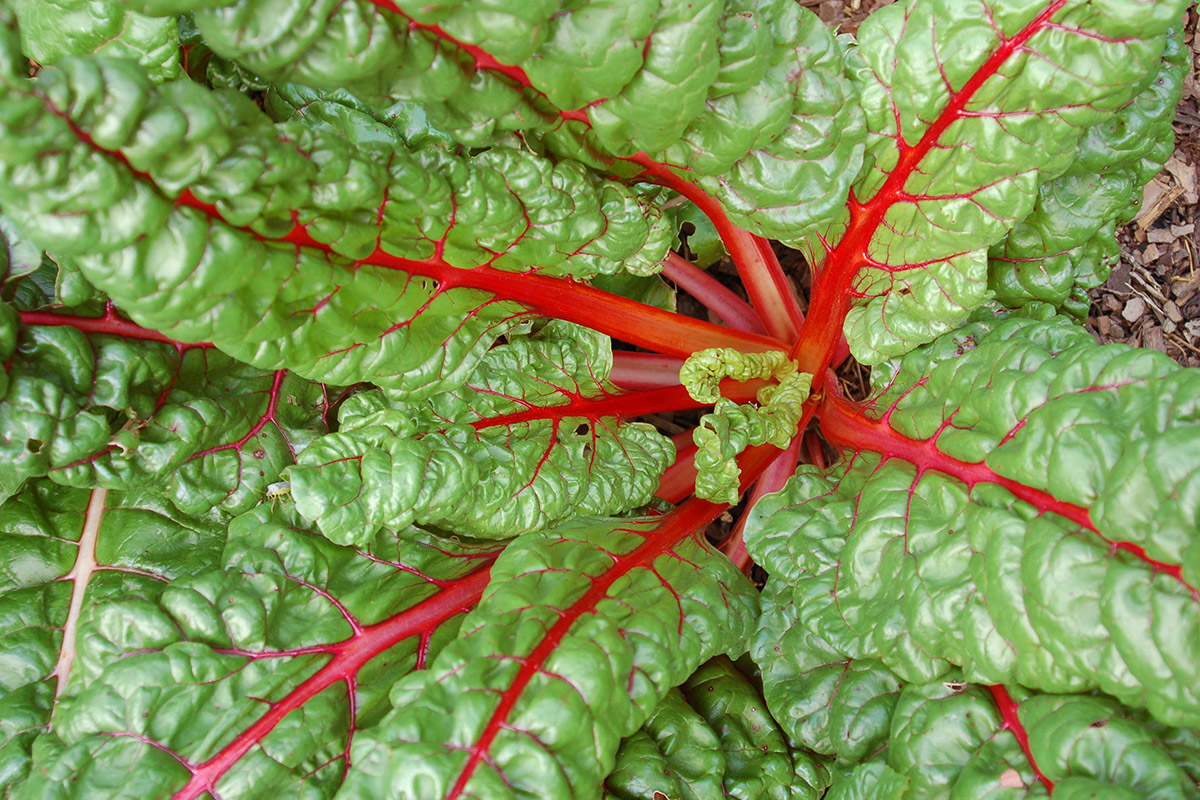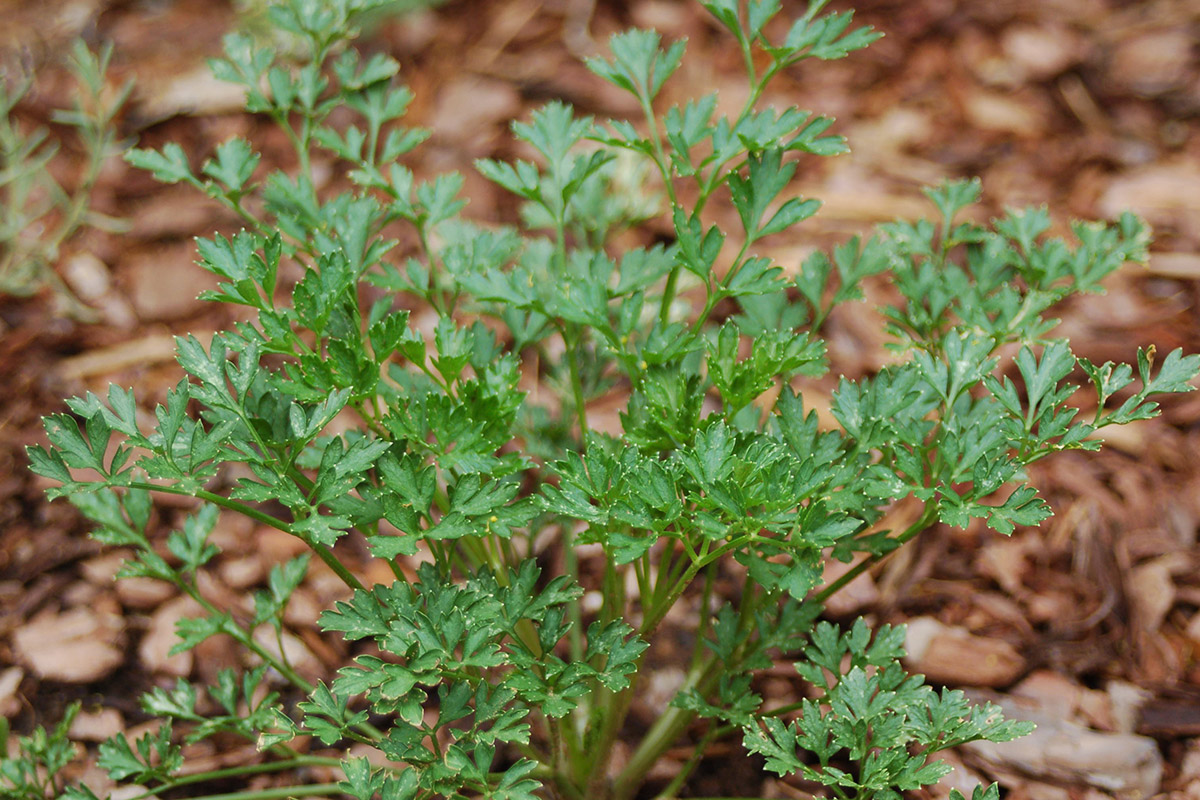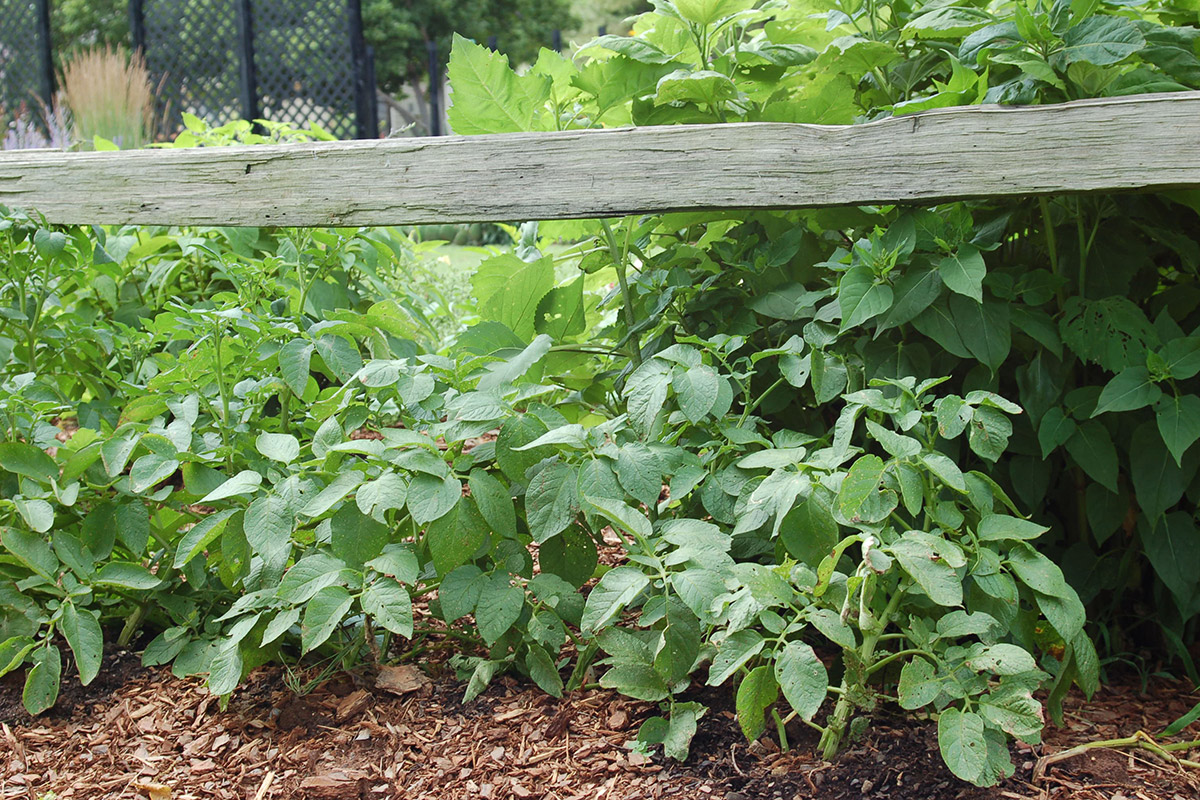
Growing cool-season crops in the Southern Plains can be tricky. Spring plantings often bolt (go to flower) from the heat before crops mature, while fall plantings are difficult to establish in the dog days of summer. For some crops, you can beat the heat by embracing the cooling power of shade.
How much shade?
First, I want to make clear I am not talking about full shade, but rather areas of the garden that are in bright shade or receive full sun for part of the day. Many crops produce well with just 3 to 4 hours of direct sun. In general, shade during the hottest part of the day provides the greatest benefit by sheltering plants from the most intense sun.
Gardens with dappled shade beneath a tree canopy or gardens with eastern exposures are all good sites for shade-tolerant crops. You can also provide shade in sunny gardens by installing shade cloth or planting heat-sensitive crops in the shade of taller crops.

Shade-tolerant greens
In general, crops harvested for their foliage do well with just a few hours of sun. Shading lettuces, spinach, and other greens from afternoon sun can help prevent these crops from turning bitter and bolting as the heat sets in. Also, look for heat-tolerant varieties for a successful spring crop. Here are a few cool-season crops that do particularly well when grown in partial shade.
Shade-tolerant greens
|
|

Shade-tolerant herbs
Herbs are another group of crops grown primarily for their foliage. Cool-season herbs, including parsley and cilantro, can be grown in partial shade to extend their life in the garden. Stevia and chamomile are two warm-season herbs that also benefit from afternoon shade in our hot climate. Perennial lemon balm produces best in cooler weather and benefits from a shady location. In fact, there are several perennial herbs that can be grown in partial shade when sunny spots are unavailable. While some of these herbs grow leggy in shade, they still produce plenty of harvestable foliage.
Shade-tolerant annual herbs
- Cilantro
- Parsley
- Chamomile (reseeds)
Shade-tolerant perennial herbs
- Lemon balm (Melissa officinalis, Zones 3–7) (reseeds)
- Mint (Mentha spp. and cvs., Zones 5–9)
- Thyme (Thymus vulgaris, Zones 5–9)
- Stevia (Stevia rebaudiana, Zones 9–11)
- Chives (Allium schoenoprasum, Zones 4–8)
- Oregano (Origanum vulgare ssp. hirtum, Zones 4–8)
- Sage (Salvia officinalis, Zones 4–8)
- Anise hyssop (Agastache foeniculum, Zones 4–9)

Shade-tolerant root crops
While several root crops can be grown in partial shade, their harvests will suffer. For large yields, stick to sunny locations, but if you want to harvest new potatoes or squeeze a few more crops into the landscape, you might want to give these root crops a try in partial shade.
Shade-tolerant root crops
- Beets
- Potatoes
- Sweet potatoes
- Radishes
- Carrots
Many of these cool-season crops can be replanted in late summer for a fall harvest. Take advantage of the shade to get these crops off to a good start. Use shade cloth or boards to cool soil for several days before planting to improve seed germination, or plant in the dappled shade of a tree or on the east side of okra, tomatoes, and other tall crops. A little shade can go a long way for producing cool-season crops in the Southern Plains.
—Kim Toscano is a horticulturalist, entomologist, garden designer, writer, and graphic designer. She previously hosted Oklahoma Gardening, a weekly PBS television program produced by the Oklahoma Cooperative Extension Service.


















Comments
Log in or create an account to post a comment.
Sign up Log in